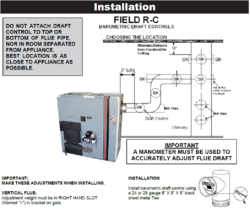brenndatomu
Minister of Fire
I guess I am not getting it. All the baros I have messed with would lay flat out wide open when the sliding weight is slide clear out, your not gonna lower the draft any more than a wide open flapper. Where are you adding the weight exactly?I have to add weight to mine. I have 36' vertical to the top of my chimney. Daryl (Kuuma) told me about a guy in Chicago who had a 45' chimney who actually added TWO BD's in order to get his draft within spec!
I can Imagine a 45' chimney would need 2 baros! Wow, can you say Hoover?! Keep the cats n dogs away when the loading door is open!
I would think 2 baros on a chimney serving anything other than a Kuuma would result in a real cold chimney and a ton of creosote!




